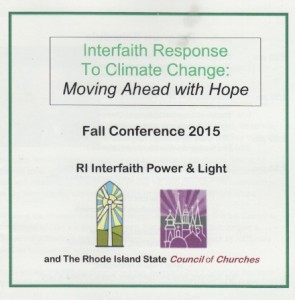
Irreplaceable
Today, the United Nations Office for Disaster Risk Reduction (UNISDR) published a video on YouTube showing how the Louvre Museum in Paris is taking careful measures to protect the priceless masterpieces in its possession against the risk of flooding. I was absolutely fascinated by this video for several reasons, the first being the work Prisere LLC has done for UNISDR. Protecting cultural heritage is an area of focus for the global frameworks for disaster risk reduction for which UNISDR is responsible. Indeed, UNISDR recently recognized the achievements of the Mayor of Venice for his efforts to protect cultural heritage. This is an issue that resonates at a very personal level.
Time and time again, when we meet people who have been impacted by disaster, they never express concern about the losses of their physical possessions, as they are replaceable. But they always express regret over the loss of treasured family photographs to hazards such as fire and flood (which is why I recommend scanning in those photographs and storing digital copies in the cloud). Now imagine that you are charged with the responsibility not of protecting family photographs accumulated over several decades, but unique art works such as the Mona Lisa and the Venus de Milo, preserved over centuries.
The complexity of the task is daunting. The Louvre is enormous, occupying space equivalent to 35 football fields, with approximately 30 miles of corridors and exhibit halls housing just under a half a million works of art. Nearly nine million people visit the Louvre each year, contributing to the tourism industry and the businesses, such as restaurants, that rely on such attractions. However, the Louvre is completely surrounded by water, as it is located on the Seine River. Paris does have a history of flooding, with the most severe flood in recorded history taking place in January 1910. The Seine’s waters rose to record levels and disrupted Paris for three weeks. The video offers great insight into the nature of the risks (including sewers, ventilation grids and emergency exits, all of which are potential flood hotspots) and the strategy to address them.
Mitigating the risk, by holding back the waters, is the first line of defense. But should the waters flood, a professionally trained squad of 500 volunteers will transport key art works to a specially-designed, secure warehouse removed from metropolitan Paris. In addition to the volunteer squad, the Louvre employs more than 50 staff for firefighting and emergency services. Finally, the French government is undertaking a major infrastructure project, at an estimated cost of 15 million Euros, to build pumping stations around the Louvre to divert flood waters away from the site.
Of course, floods are not the only challenge to preserving our cultural heritage. I attended a private art exhibition in New York not too long ago. The insurer underwriting the policy for the artwork (which just happened to be AXA, a global insurance company headquartered in Paris) had hired plain clothes security people to mingle with the guests at the exhibit. In the event of fire, each security person was assigned a specific painting to immediately remove from the building to a secure location. And it wasn’t that long ago when another insurance company, AIG, had to bring in helicopter services to remove valuable artworks housed by private collectors in the vicinity of wildfires in southern California.
Seeing this video also caused me to pause and reflect about the challenges in preserving cultural sites that do not have access to the same level of resources as those committed to protecting the Louvre. I am currently helping out as a volunteer at a church in a coastal area in Rhode Island that has sustained water damage in the past. The church has cultural and historic significance, and of course, a loyal congregation, but cannot readily access financing to remedy past damage or retrofit the church buildings against the risk of future losses. I am helping to identify funding sources to address these needs. This is an area where each small business owner can help in our local communities.
By the way, the photograph I included in this blog is that of the ceiling of the Paris Opera House, hand painted by Marc Chagall. If you double-click on the photograph, it should enlarge to reveal the detail depicting a scene from “The Magic Flute”. I took this photograph during a private behind-the-scenes tour of the Paris Opera, generously offered by my hosts with Thierry Mugler’s team when I was their guest last year. I have been to Paris, and the Louvre, many times, but this trip was extraordinary (and I don’t have any photographs of the interior of the Louvre to share). It is an extraordinary challenge to think about protecting treasures like the Louvre and the Paris Opera House from disaster scenarios that are much more severe than those in force when these institutions were built. Certainly no one was thinking about climate change back then.


